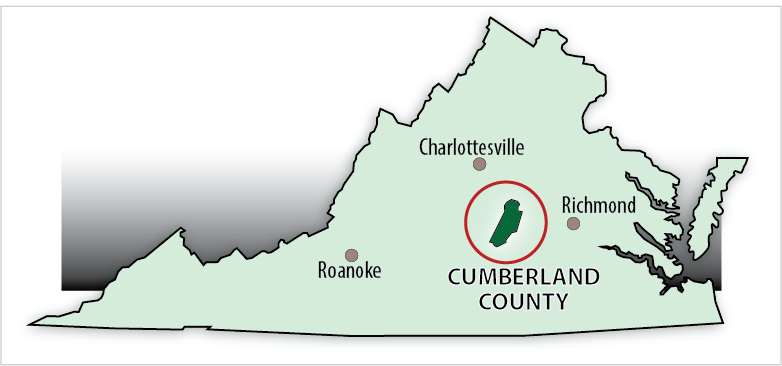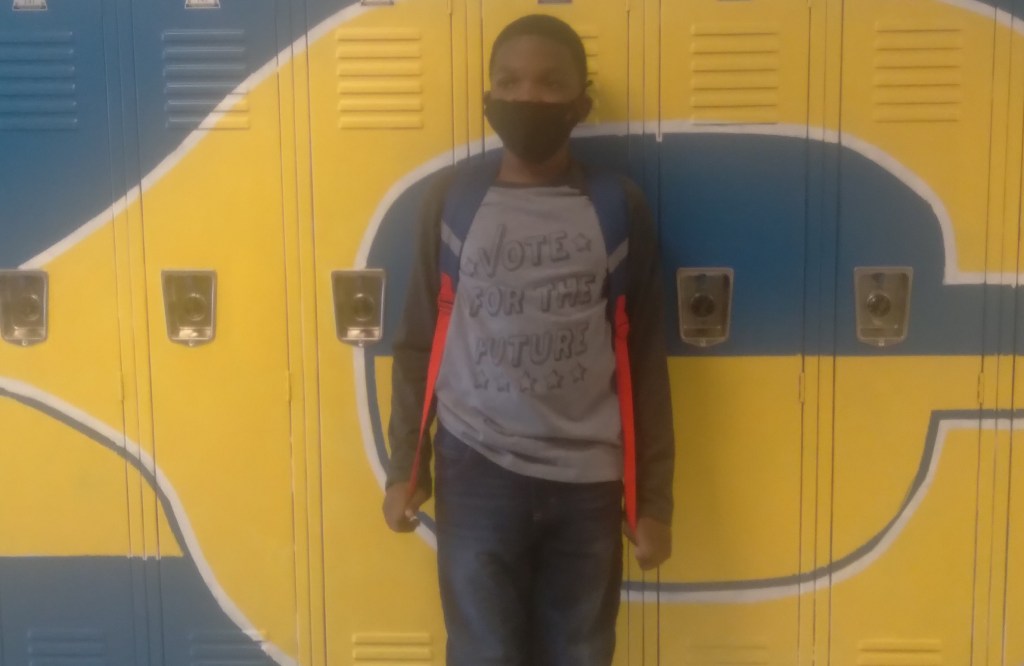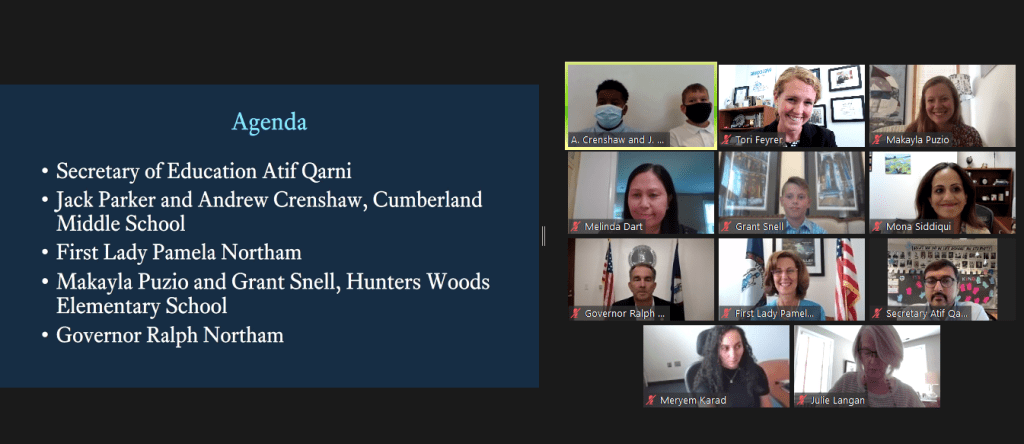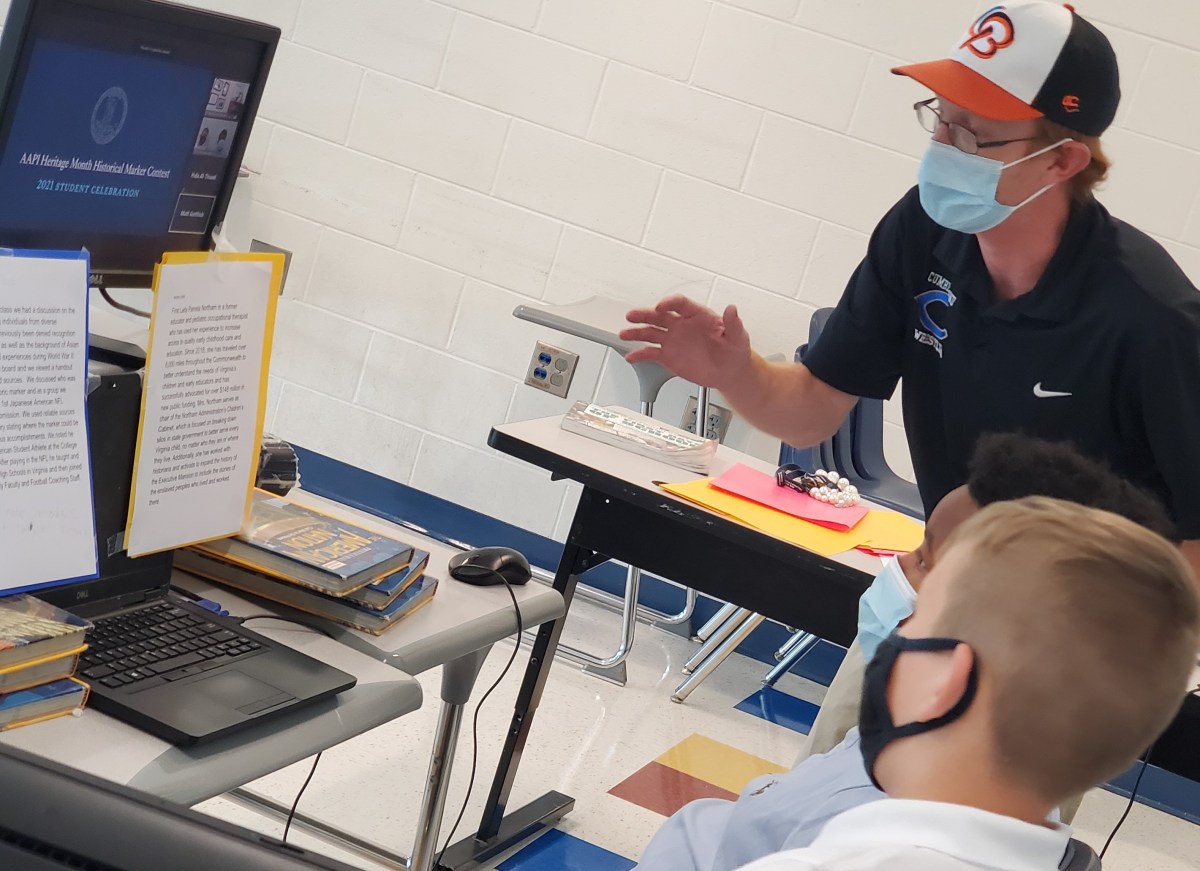Certain characteristics always stand out. Across cultures, acts of selflessness and courage draw admiration and respect.
That’s exactly what got Cumberland Middle School sixth-grader De’Von Carter interested in learning about Kim Kyusik last year.
“He stood up for the rights of others and helping others while fighting for Korean Independence and democracy,” Carter said in an email.

Kyusik (1881-1950) was a leader in the Korean independence movement. The Roanoke College graduate served the Provisional Korean Government based in China as secretary of foreign affairs, and later as minister of education and vice president.

According to the text of a new state historical highway marker planned for Salem to recognize Kyusik’s contributions, “he advocated Korean independence at the Paris Peace Conference in 1919, promoted the Korean cause in the U.S. as chair of the Korean Commission, and helped organize the Korean National Revolutionary Party in China.”
“He always put others before himself until the end,” Carter said.
Historical markers proposed by Cumberland students
Kim Kyusik 김 규식 (1881-1950)
Kim Kyusik, leader in the Korean independence movement, was born in southern Korea and graduated from Roanoke College in 1903. After Japan annexed Korea in 1910, Kim served the Provisional Korean Government based in China as secretary of foreign affairs, and later as minister of education and vice president. He advocated Korean independence at the Paris Peace Conference in 1919, promoted the Korean cause in the U.S. as chair of the Korean Commission, and helped organize the Korean National Revolutionary Party in China. After World War II, Kim opposed permanent partition of Korea into North and South. He was kidnapped by the North Korean army during the Korean War and died in captivity.
Marker will be placed on the campus of Roanoke College in Salem
Arthur Azo Matsu (1904-1987)
Art Matsu, renowned football player, was the first Asian American student to graduate from William & Mary. A four-year starter at quarterback (1923–1926), he earned a national reputation while guiding William & Mary’s powerful offense. As team captain during his senior year, he led the program to its first postseason win. The son of a Scottish mother and a Japanese father, Matsu was a prominent leader on campus even as Virginia passed a series of laws in the 1920s to prevent “race mixing.” In 1928, he became the first player of Japanese descent in the National Football League. From 1931 until the mid-1950s, he taught physical education and coached football at Rutgers University.
Marker will be placed on the campus of William & Mary in Williamsburg
Samuel P. Bolling (1819-1900)
Samuel P. Bolling was born enslaved in Cumberland County and became a skilled mechanic. After the Civil War he purchased several lots in Farmville, where he established a successful brickyard by 1874. He later acquired more than 1,000 acres in Cumberland. About 1880 he aligned with the Readjuster Party, a biracial coalition that refinanced the antebellum state debt to pay for public education and other services. In 1885 he was elected to represent Buckingham and Cumberland Counties in the Virginia House of Delegates; his son, Philip S. Bolling, had won this seat in 1883. Bolling later donated land to establish a school. His daughter, Eliza Bolling, was a noted local educator.
The Samuel Bolling marker will be placed in Cumberland County
All three men are now slated to have their work memorialized with a Virginia State Historical Highway marker thanks to the work of Cumberland Middle School U.S. History teacher Lewis Longenecker and three of his classes.
Highway markers In Virginia address topics of national, state, and regional significance. According to Gov. Ralph Northam’s office “the program is an effort to recognize and chronicle events, accomplishments, sacrifices, and personalities of historic importance to Virginia’s story.” Since 1927 Virginia’s Department of Historic Resources and the Department of Transportation have installed more than 2,600 such markers.
As of January 2020, only 350 markers recognized African Americans. Northam has said there are not enough markers for Asian Americans and Pacific Islanders.
Last school year the governor’s office addressed the disparity with two contests — the second annual Black History Month Historic Marker contest and the first Asian American Pacific Islanders Historic Marker contest.
In a news release this spring Virginia Governor Ralph Northam said, “The contributions of influential African Americans have frequently been ignored, underrepresented, and even silenced.”
In the news release announcing the AAPI marker contest he said “Throughout history, Asian American and Pacific Islander communities have made significant contributions to our Commonwealth and our country, but too often their stories remain untold.”
Both contests were designed to help tell a more comprehensive and inclusive story of Virginia’s past.
Like hundreds of other teachers, Longenecker jumped on the chance to incorporate both contests into his fifth and sixth-grade lesson plans.
“I looked at it and I was like, well why not do this? I try to embed local history in everything,” Longenecker said, describing the maps he is busy hanging in the classroom this week.
The contest was a gamble for any teacher. They were juggling remote classes with hybrid and in-person classes not to mention the normal weather-related school closings that plague Virginia. In fact, Longenecker would only get to see the students he encouraged to enter the contest about four times a month.
At the middle school, one group of students attended school on Mondays and Wednesdays and the other group attended on Tuesdays and Thursdays. Packets of material were being sent home with students, while those who had internet connections were working online as teachers struggled to keep each class progressing at an even pace.
“There wasn’t a lot of time,” Longenecker said. “Last year was a very, very unique year. So it just required a lot of flexibility.”
Longenecker turned to Google Docs so students could collaborate, regardless of their location.
“They showed a whole lot of focus,” Longenecker said.
Students nominated 100 African Americacns for the Black History Month Marker contest. Five candidates from each contest were selected for markers, three of the names submitted by CMS. All of the markers have now been approved by Virginia’s Board of Historic Resources and will be paid for by the Virginia Department of Education.
“It says a lot, our students, students everywhere, are resilient. They are able to deal with, in most cases, deal with circumstances and not just deal but move forward in challenging times. And the group of students that I had, all the students that came in last year for hybrid, this was a challenging year for them. They did really well. If there was a setback, they powered through it and progressed and it says a lot about the resiliency of the students at Cumberland Middle School,” Longenecker said.


Courtesy of Cumberland County schools.
He hopes the project taught students the importance of knowing the difference between good and bad sources, how to find good sources and that they should base their views and opinions on what they learn from those sources.
Cumberland Middle School students who worked on marker project
Arthur Matsu marker group: Jack Parker, Abdullah Fulani, Andrew Crenshaw, Iziah Brown and Hailey Frank.
Kim Kyusik marker group: Kavion Randolph, Jaylyn Jackson, Jaylen Thomas, De’von Carter, Brock Sullivan and Santelle Baker.
Samuel Bolling marker group: Ashley Alvarez, Allecia Mitchell, Anna Parker, Alex Hernandez, Christopher McCoy, Adalie Ruehrmund, and Harley Thurston
Roanoke College’s Stella Xu, the John Turbyfill Professor of History is very proud of the work Cumberland Middle School students did to nominate Kyusik.
“This is a very touching and long-awaited recognition,” said Xu who became an American citizen three years ago. “Kim left behind a lasting impact.”
With all the negative attention on Asian Americans during the pandemic, Xu said it’s more important than ever for people to know that Asian Americans and Pacific Islanders have been contributing for decades.
She hopes the markers teach the next generation tolerance and respect.
CMS 8th grader Anna Parker said projects like this are important ways to show that students really are learning Virginia’s history.
“And to see how much [students] would have to say about our history. It shows that students care about Cumberland history and Virginia history,” she said in an email.
Amy Trent is a Lynchburg-based journalist. Her work has appeared in numerous magazines and newspapers. She is a graduate of the University of Iowa and a member of the Society of Professional Journalists, Investigative Reporters & Editors and the Association of Health Care Journalists.

